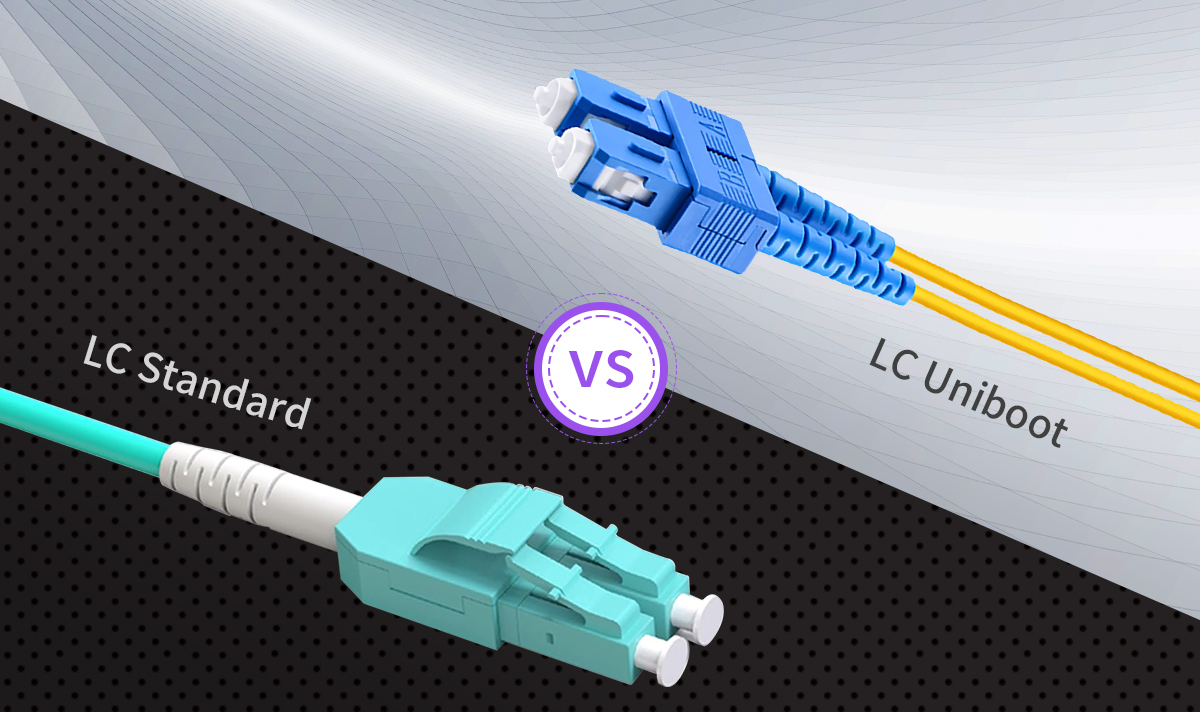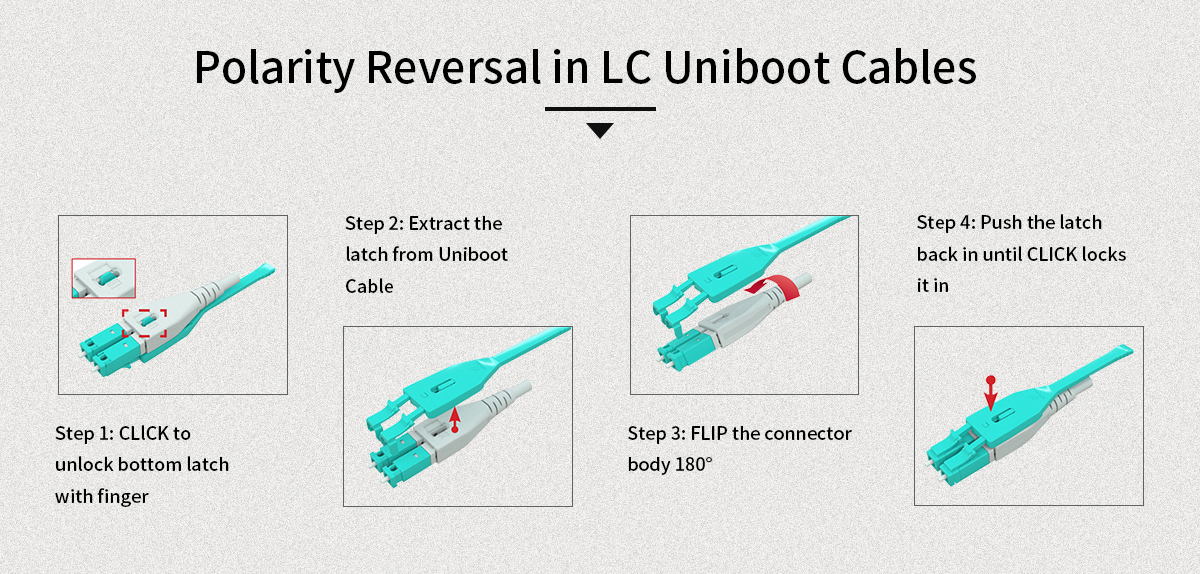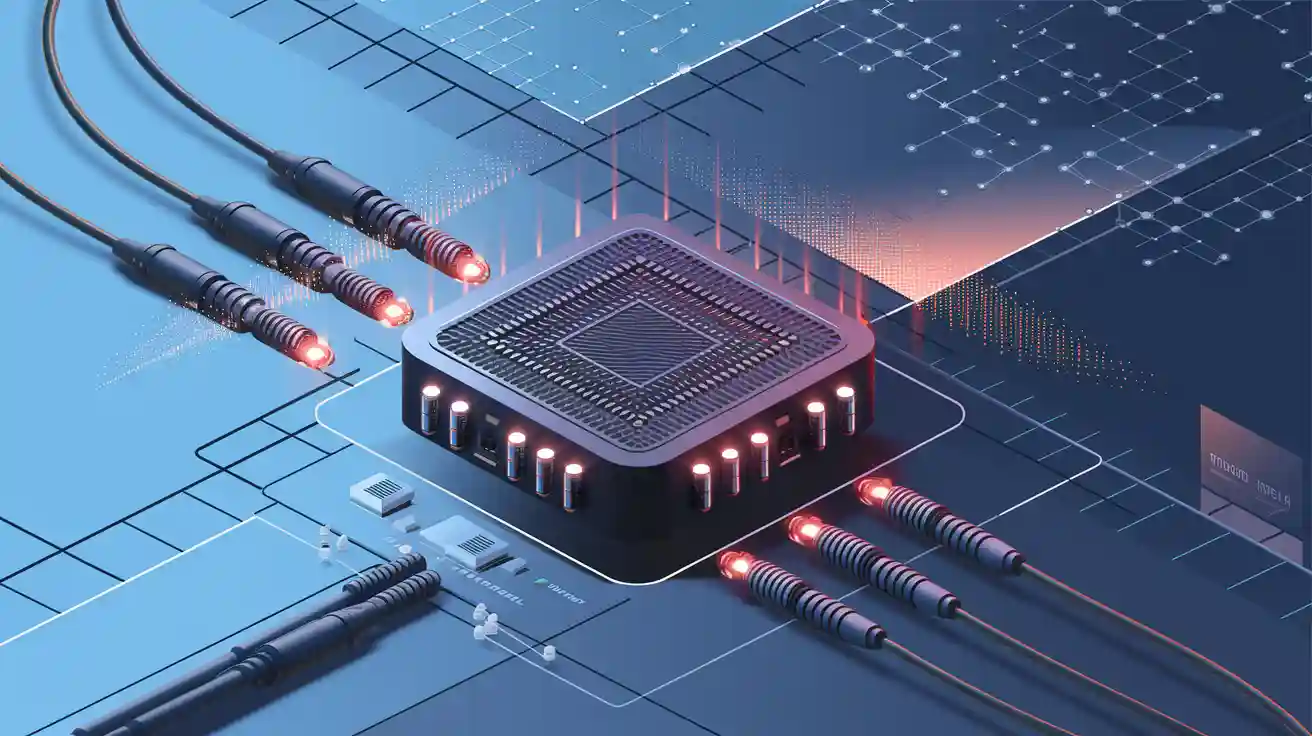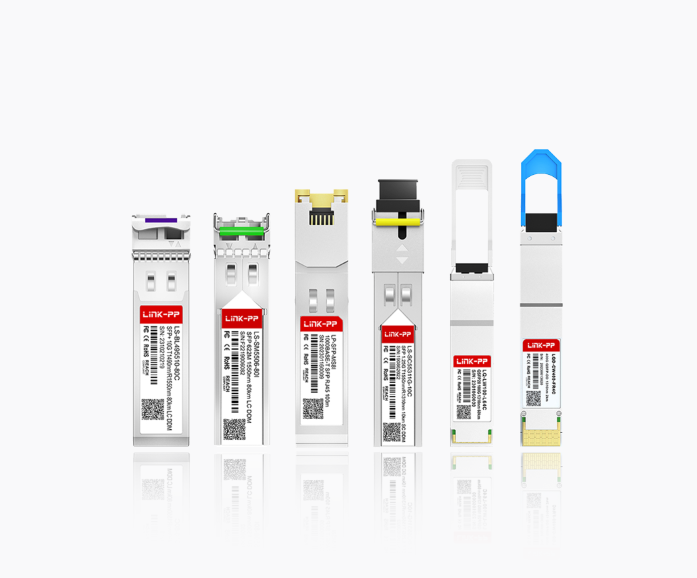
When picking between uniboot LC and standard LC cables, understanding their differences is essential for making the best choice for your network. Uniboot LC cables are smaller and take up less space, making them ideal for crowded setups with numerous cables. In contrast, standard LC cables feature a conventional design and are suitable for simpler configurations. The performance of these cables also varies; standard LC cables typically experience a signal loss of about 0.3 dB, while some uniboot LC cables can lose as little as 0.12 dB. These differences significantly impact your system's efficiency and the smoothness of data transmission, especially when using optical transceivers.
Key Takeaways
Uniboot LC cables combine two fibers in one cover. This saves space, making them great for crowded places like data centers.
Standard LC cables are easy to use and cost less. They work well for simple networks that don’t need many changes.
You can switch polarity fast and without tools using uniboot LC cables. This makes setup and maintenance easier.
Think about your network’s needs: pick uniboot LC for saving space and flexibility, or standard LC for simple and steady use.
Understanding Uniboot & Standard Duplex LC Cable
What is Uniboot LC Cable?
Uniboot LC cables are small and cleverly designed. They combine two fibers into one jacket, cutting cable bulk in half. This setup allows two-way data flow while using fewer cables. The connectors are in one unit, perfect for crowded spaces.
These cables have helpful features like a quick-release latch for easy unplugging. You can also switch the polarity without tools or exposing the fibers, making maintenance simple. Uniboot LC cables work with both multimode and single-mode fibers, fitting different networks. They meet important standards like GR-326 and TIA-568, ensuring they work well.
What is Standard Duplex LC Cable?
Standard LC cables use a classic design. They have two separate connectors, each carrying one fiber. This makes them easy to use and compatible with most networks. These connectors plug into adjacent ports on an optical transceiver or panel.
These cables are strong and reliable. They use small single-mode fibers that align well and lose less signal. Standard LC cables can handle tough conditions and stay stable under pressure. They take up more space than uniboot LC cables but are simple and dependable, making them a favorite for many uses.
Comparing Uniboot LC and Standard LC
Uniboot LC and standard LC cables have different strengths. Here's a comparison:
Feature | Standard Duplex LC Cable | Uniboot LC Cable | Winner for High-Density |
|---|---|---|---|
Cable Structure | Two separate connectors | Single boot housing two fibers | Uniboot LC |
Port Density | Standard spacing required | Enables tighter port packing | Uniboot LC |
Cable Bulk at Panel | Higher (two cables/boot per link) | Significantly Lower (one boot/link) | Uniboot LC |
Polarity Reversal | Requires re-patching or new cable | Simple twist of the boot (Integrated) | Uniboot LC |
Cable Management | More challenging (two paths/link) | Easier (single path/link) | Uniboot LC |
Airflow Obstruction | Higher | Lower | Uniboot LC |
Handling/Installation | Familiar, simple | Slightly different technique needed | Standard LC |
Cost (per link) | Generally Slightly Lower | Generally Slightly Higher | Standard LC |
Uniboot LC cables save space and make polarity changes easy, great for crowded setups. Standard LC cables are cheaper and simpler, ideal for basic networks.
Polarity Management in LC Cables
Polarity Reversal in LC Uniboot Patch Cables
Polarity is important for fiber optic communication. It makes sure the send signal (Tx) matches the receive signal (Rx). LC uniboot patch cables make this easier with their smart design. You can switch polarity in seconds without tools or touching the fibers. This saves time and makes setup faster.

Benefits of polarity reversal in LC uniboot cables include:
Faster data center setups.
Fewer cables needed.
Simple polarity changes during maintenance.
These features make LC uniboot cables great for places needing quick changes and smooth operations.
Polarity Handling in Standard LC Cables
Standard LC cables use a basic way to manage polarity. Each connector has one fiber, and switching polarity needs tools. You must move the send and receive fibers by hand, which takes time. This method works but isn’t ideal for crowded setups needing fast changes.
Standard LC cables are good for networks that don’t change much. Their simple design makes them a solid choice for steady systems.
Comparison: Polarity Management in Uniboot LC vs Standard LC
When comparing polarity, LC uniboot cables are faster and easier. They don’t need tools, saving time and effort. Standard LC cables need manual work, which can slow things down.
Feature | LC Uniboot Patch Cables | LC Standard Cables |
|---|---|---|
Polarity reversal time | 3 seconds | Needs manual work |
Fiber exposure | No exposure needed | Fibers exposed during switching |
Ease of use | Very easy | Needs tools |
LC uniboot cables are better for flexible setups. Standard LC cables are reliable for networks that stay the same. Choose based on how much flexibility your network needs.
Use Cases for Uniboot LC and Standard LC
Best Uses for LC Uniboot Patch Cables
Uniboot LC cables work well in tight spaces. They combine two fibers into one jacket, saving room. These cables are great for busy places like data centers and big networks. They help keep cables neat, reduce mess, and improve airflow. Better airflow keeps equipment cool and running smoothly.
LC uniboot cables have special features for different needs. For example:
Feature | Description |
|---|---|
Modularity and Flexibility | Combines flexibility and modularity for many network setups. |
Adjustable Polarity | Lets you change polarity without tools or exposing fibers. |
Push-Pull Mechanism | Makes plugging and unplugging easy with a squeeze motion. |
If you often change polarity or work in crowded setups, LC uniboot cables are ideal. Their tool-free design saves time and avoids mistakes during setup or repairs.
Best Situations for Standard LC Cables
Standard LC cables are better for simple networks. They have two separate connectors and are easy to use. These cables work well in small offices or home networks. They are reliable and fit most fiber systems.
Standard LC cables don’t save as much space as uniboot cables. But they are steady and good for networks that don’t change much. Their basic design makes them easy to handle and maintain.
Choosing the Right Cable for Your Needs
Think about your network’s needs before picking a cable. Look at space, polarity changes, and future growth. Here’s a comparison to help:
Feature | LC Uniboot | Standard LC |
|---|---|---|
Size | Smaller, 2-mm diameter | Larger, standard duplex size |
Polarity Change | Easy to change | Needs retermination if wrong |
Space Savings | Saves lots of space | Takes up more room |
Application Suitability | Great for crowded setups | Good for basic networks |
LC connectors are small and work well in modern networks. They are used in data centers and fast networks because they lose less signal. Their design allows many connections in small spaces.
For crowded places, LC uniboot cables save space and are flexible. Standard LC cables are dependable for simple networks with fewer needs.
Conclusion
Picking between LC uniboot and LC standard cables depends on your network. LC uniboot cables are small and fit crowded spaces well. They let you switch polarity easily without tools. These features make them great for modern data centers. LC standard cables are cheaper and work for simpler setups. Their basic design fits networks with more space.
Feature | LC Uniboot Cables | LC Standard Cables |
|---|---|---|
Space Efficiency | Small size, good for crowded places | Bigger size, needs more room |
Flexibility | Easy polarity change without tools | Fixed polarity, less flexible |
Cost | Costs more | Cheaper, good for basic setups |
Ease of Use | Quick to plug and unplug | Needs more effort to connect |
Knowing these differences helps you pick the right cable. Think about your budget, space, and flexibility needs. This will help your fiber setup work well for sending data.
FAQ
Why are LC uniboot cables good for tight spaces?
LC uniboot cables put two fibers in one jacket. This smaller design saves space and helps airflow. They are perfect for crowded places like data centers.
Is it easy to change polarity with standard LC cables?
No, standard LC cables need tools to change polarity. You have to move the fibers by hand, which takes longer than LC uniboot cables.
Do LC uniboot cables work with all fiber types?
Yes, LC uniboot cables work with single-mode and multimode fibers. Their design fits many different network setups.
Are LC uniboot cables more expensive than standard LC cables?
Yes, LC uniboot cables cost more because of their special design. But they save money later by needing less maintenance and working better in crowded setups.
Which LC cable is best for simple networks?
Standard LC cables are best for basic networks. They are cheaper and easy to use, making them great for setups with more space.




